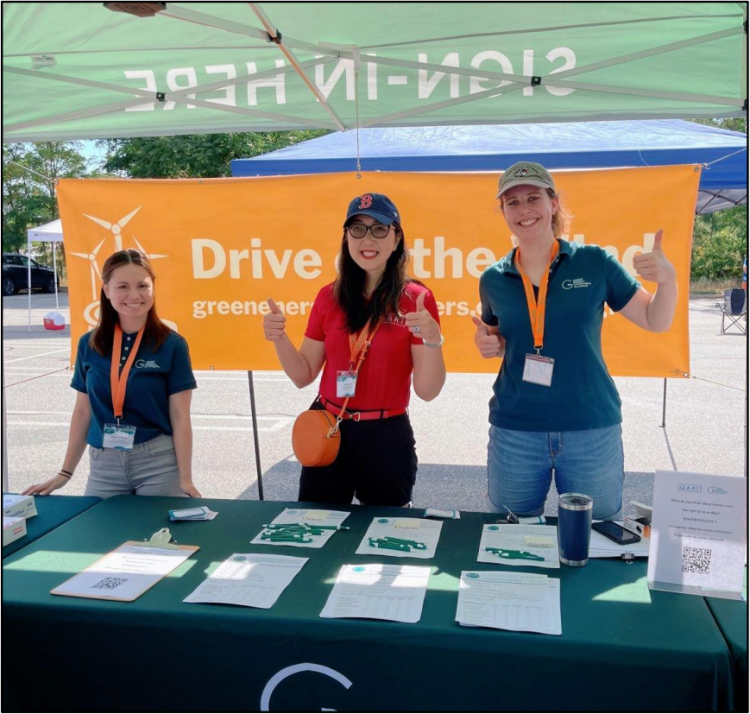
MassCEC’s clean transportation programming offers important insights into how to improve accessibility and equity in grant applications.
Why should we look to center equity in transportation?
Marginalized communities too often bear the brunt of climate change and environmental pollutants, and the impacts of transportation are no exception. Low-income and minority individuals, while less likely to own a car, are more likely to live near byproducts of transportation that result in higher levels of air pollution and contribute to poor health. In Massachusetts, Asian American residents are exposed to 36% more pollution from on-road transportation than white residents. African American and Latino residents are exposed to 34% and 26% more vehicle pollution respectively than white residents. Transportation related pollution is disproportionately concentrated in communities of color; as such, we must look to center equity in our clean transportation programming. In order to ensure a just energy transition, we must see that clean transportation technologies benefit the communities that need them the most.
What did we do to reduce barriers in our programs?
MassCEC, an economic development agency in Massachusetts whose mission is to accelerate clean energy and climate change solutions, is working to help close existing health and economic disparities in the transportation sector. This year, we awarded $5 million in grant funding for ten projects under the Accelerating Clean Transportation for All (ACT4All) program. The awarded projects range from e-bike pilots and ride-for-hire electrification to EV consumer education. ACT4All was designed to support projects in overburdened and underserved communities such as Gateway Cities and Environmental Justice (EJ) populations including low-income, non-English speaking, and minority communities.

Successes
The planning grant opportunity proved to be successful in reducing barriers to application. In total, twelve organizations applied for the planning grant, adding up to $90,000 in funding. Out of those organizations, eight were eligible for the ACT4All grant, and five were awarded under the program. Survey respondents had good things to say about the planning grants – one ACT4All awardee commented, “It was FANTASTIC! [In the future] keep funding planning grants and the overall program.” Here are some of the ways organizations used the planning grant funds:
- Hired a Transportation and Mobility Fellow to support with project implementation
- Paid for operational costs to cover a portion of time and effort of the RFP process
- Covered expenses related to staff time and travel regarding the research and networking needed to apply for the grant
- Paid for staff time to convene meetings with community-based organizations and other potential project partners
Whatever the specific function of the grant, one respondent and ACT4All awardee summed it up nicely: the planning grant was used “to justify spending time applying for [the ACT4All grant].” It gave organizations the flexibility and resources they needed to meet with local organizations, find project partners, and sit down to write the grant application.
Lessons Learned
Through the ACT4All application process and the survey released after the program, we were able to learn from organizations ways to improve in future programming to make opportunities like the ACT4All grant even more accessible to target populations.
Support: Some organizations, especially those with less resources and experience writing grant proposals, may have great ideas for projects but may not know how to communicate those ideas in a written application. MassCEC found that the monetary support that planning grants offered and direct communication with MassCEC staff were most helpful for applicants. So, offering more direct support throughout the application process could help applicants develop more comprehensive applications. For example, one way to support applicants is by requiring a preapplication submission and meeting with organizations before the application deadline to provide more direction.
Time: Half of survey respondents who didn’t apply for the ACT4All grant said they didn’t do so because they didn’t have enough time to apply. Of those who did apply, some applicants found that the application process was rushed and that it was also difficult to find project partners in time. Extending the timeline for future grant programs could make it easier for applicants to have success finding project partners and submit more comprehensive grant applications; it could also expand the total pool of applicants and target the populations that equity focused programs like ACT4All are aiming to reach.
Outreach: More than 1/3 of survey respondents (10+) didn’t know about MassCEC’s planning grant opportunity but would have applied for it if they had. In future programs, getting the word out about these initiatives and reaching a broader range of stakeholders should be top priorities. Most respondents who had heard about the planning grant opportunity were stakeholders who MassCEC engages with regularly and who are in our direct circle of contact. Therefore, we should focus on finding alternative pathways to reach a wider range of applicants within and across different communities in the Commonwealth.